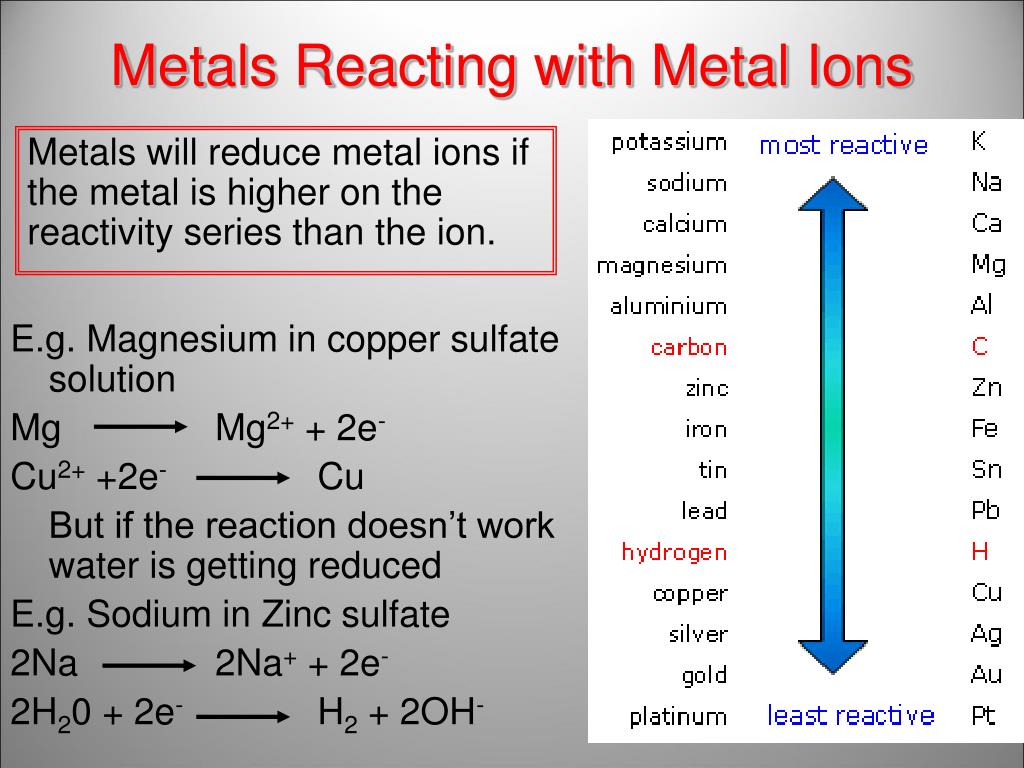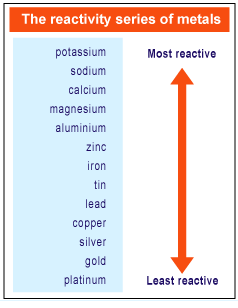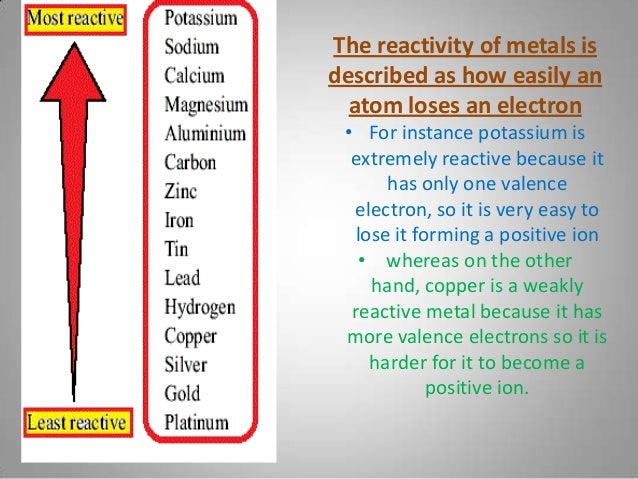
Judging the oxidising or reducing ability from E° values The oxidising ability of the metal ions increases as you go down the series.
Metal ion reactivity series series#
Metal ions at the bottom of the series are good at picking up electrons. The reducing ability of the metal increases as you go up the series. Metals at the top of the series are good at giving away electrons. Summarizing this on the electrochemical series Copper(II) ions must be good oxidising agents. That must mean that it takes electrons from it.Ĭopper doesn't form its ions very readily, and its ions easily pick up electrons from somewhere to revert to metallic copper. Magnesium must be a good reducing agent.Īn oxidising agent oxidises something else. Magnesium is good at giving away electrons to form its ions. That must mean that it gives electrons to it. When the copper(II) ions gain electrons to form copper, they are being reduced.Ī reducing agent reduces something else. When solid magnesium forms its ions, it loses electrons. Now apply this to one of the redox equilibria:

Oxidation and reduction in terms of electron transfer Oxidation / reduction and the electrochemical series The number of electrons built up on each electrode will be identical and so there will be a potential difference of zero between them. Obviously if you connect one standard hydrogen electrode to another one, there will be no difference whatsoever between the positions of the two equilibria. That produces a potential difference which is measured as a voltage. That difference in the positions of equilibrium causes the number of electrons which build up on the metal electrode and the platinum of the hydrogen electrode to be different.

Remember that each E° value shows whether the position of the equilibrium lies to the left or right of the hydrogen equilibrium. This will be extended to other systems on the next page. The most negative E° values are placed at the top of the electrochemical series, and the most positive at the bottom.įor this introductory look at the electrochemical series we are going to list the sort of metal / metal ion equilibria that we looked at on the previous page (plus the hydrogen equilibrium) in order of their E° values. The electrochemical series is built up by arranging various redox equilibria in order of their standard electrode potentials (redox potentials). Follow this link if you aren't confident about oxidation and reduction in terms of electron transfer, and use the BACK button on your browser to return to this page.Īrranging redox equilibria in order of their E° values It is also important that you understand about redox reactions. A link at the bottom of that page will bring you back here again. You will find it much easier to understand if you first read the introduction to redox equilibria before you go any further. Important: If you have come straight to this page via a search engine, you should be aware that this is the second page of a linked series of pages about redox potentials.

This page explains the origin of the electrochemical series, and shows how it can be used to work out the ability of the various substances included in it to act as oxidising or reducing agents.


 0 kommentar(er)
0 kommentar(er)
